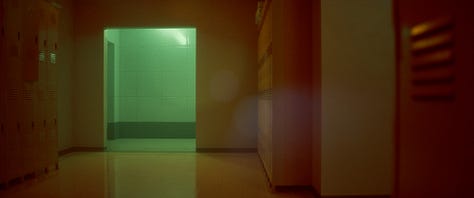It happens to every 3D Artist. You show up for your daily review. You sit down. Position your notepad. Take a sip of coffee. The lights dim and the critiques begin. Everything is humming along swimmingly until it happens. From out of the darkness an unknown voice rises and delivers a note that makes you raise an eyebrow.
“Wait…what? Did I hear them right? I’m working 100-hour weeks and they want me to do what, too!?! Are you kidding me!?!?! No one will ever notice that!!”
You just got Pixel F**ked.
Some Director or Producer or department head has picked your shot to showcase their impeccable eye and attention to detail and spouted off some asinine note that will never be noticed by anyone.
Of course, you hit the note because that’s your job, but at the end of the day…you know you will feel drained knowing your time, attention, and focus was wasted on altering something that no one will ever care that you did.
But what’s the problem? I’ve heard the stories of obsessive founders scolding early Google employees that the colors of the letters had to be the exact right shade of yellow or Steve Jobs obsessing over every minor design component of the first iPhone. Is that a side-effect of creative genius? Obsessive, all-knowing bosses who fixate on every micro-detail to ensure that every aspect of the work is perfect?
Well. Not exactly. While I do believe passionate focus is essential in the creative process, extreme fixation on unimportant details is exhausting and ultimately leads to bad outcomes.
For starters, it’s a complete drain on resources. For every nitpicky note, you need to spend time addressing it. That time you are using is finite. There is only a set number of artists working maximum hours until a given deadline to complete the entire project. The only thing that is a variable is the input. Every minute doing one task is a minute that could not be used on another.
And it not only drains hours but also drains the artist’s creative fuel. I am a firm believer that we only have so many creative sparks in our bodies on a given day. Ever get to the end of the day and you feel like you’re just making your image look worse? That’s when you're tapped out on creative spark.
If you ever find yourself in a position to give notes and you feel yourself fixating on minor issues, make sure you take a step back and figure out why. Because this type of focus can actually be an indicator that you may be trying to ignore something bigger.
Some directors and supervisors facing a large, braod issues on a project will receed into the pixels for comfort. Since most come from artistic backgrounds, they recess to the familiar. Getting into the minuscule details of the work is a way of avoiding the true, larger problems. So make sure that isn’t happening in your work. Always ensure that you are working large notes to small notes in your reviews to avoid involuntarily focusing on tiny issues to avoid the real problems.
What’s a better way?
In an interview, Bob Iger put it well. He said (and I am loosely quoting because it was from a podcast) that as the leader of a creative group, you must give your people the space to be creative. Tell them where you want them to go and let them figure out the details. It’s through that process the good ones can surprise you and actually lead to better results.
Another example is this George Patton quote, “Never tell people how to do things. Tell them what to do and they will surprise you with their ingenuity.”
So, again, focus the majority of your attention on high-level concerns and let the creatives under your supervision polish the details.
And the next time you are sitting in reviews and the hair on the back of your neck arises and goosebumps sprout all over your body and that voice pipes up “Hey…wouldn’t it be cool if…” You run. You don’t walk. You run out of that dark room. You get out of there. Go!!! Get to the chopper!!! (And if you don’t say that last line with an Arnold Schwarzenegger accent, I really don’t know what you are doing!)
3D News of the Week
Imageworks breaks down ‘The Sea Beast’ - BeforesAndAfters.com
Magic Nodes: node-based compositing in After Effects - cgchannel.com
Samsung, Google and Qualcomm are making a mixed-reality platform - techcrunch-com
I'm not buzzing about Disney's Toy Story 5 announcement - creativebloq.com
Tradigitalist Toolbag: A Collection of Blender-Made Tools For Creating Traditional-Style Paintings - 80.lv
3D Artist of the Week









Original Reference Image:
3D Tutorials
3D Job Spreadsheet
Link to Google Doc With A TON of Jobs in Animation (not operated by me)
Michael Tanzillo has been a Senior Artist on animated films at Blue Sky Studios/Disney with credits including three Ice Age movies, two Rios, Peanuts, Ferdinand, Spies in Disguise, and Epic. Currently, Michael is a Head of Technical Artists with the Substance 3D Growth team at Adobe.
In addition to his work as an artist, Michael is the Co-Author of the book Lighting for Animation: The Visual Art of Storytelling and the Co-Founder of The Academy of Animated Art, an online school that has helped hundreds of artists around the world begin careers in Animation, Visual Effects, and Digital Imaging.
www.michaeltanzillo.com
Free 3D Tutorials on the Michael Tanzillo YouTube Channel
Thanks for reading The 3D Artist! Subscribe for free to receive new posts and support my work. All views and opinions are my own!







